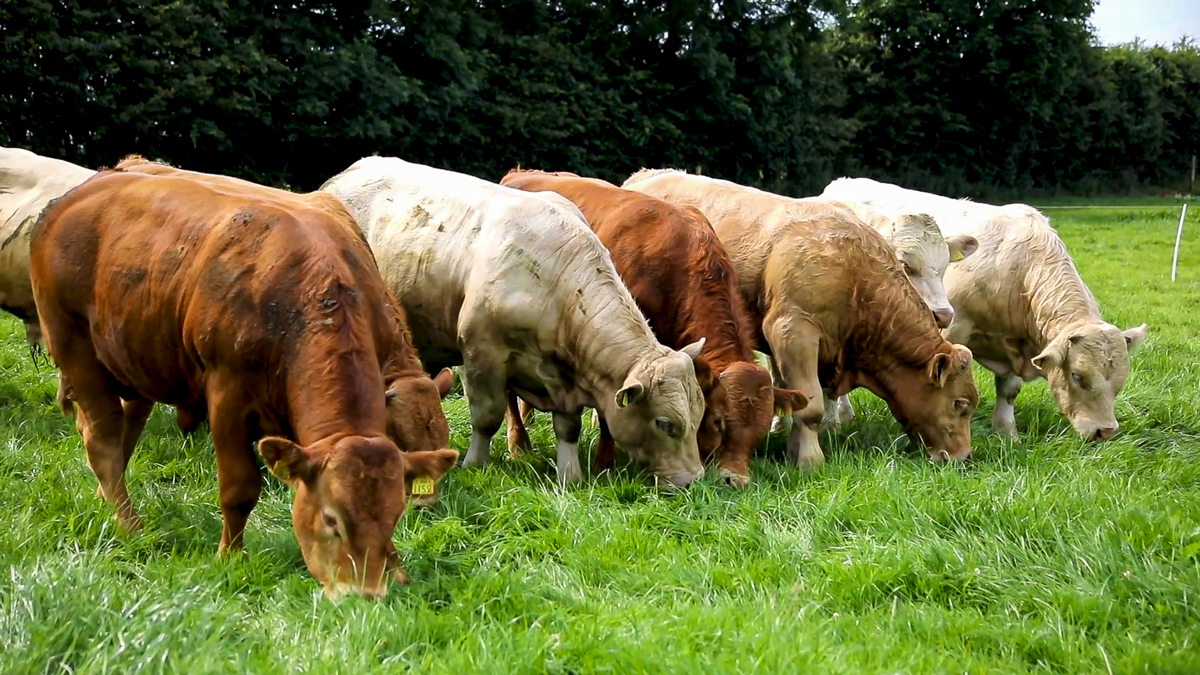Teagasc released its ‘Cattle Budget 2020’ report this week. It gives farmers an insight into the most up-to-date assumed costs of production and required break-even margins.
The budget provides a detailed break-down of production systems, such as: winter-finishing steers; weanling to beef; autumn to autumn (steer finishing); and continental bull-beef finishing.
Input and fixed costings, stocking rates and management (approaches) have been altered to suit individual production systems.
When releasing the budgets, Teagasc beef specialist Aidan Murray highlighted continued uncertainty within the sector as a major concern for farmers.
He explained: “Many businesses in the current climate are struggling to make sense of all that is happening and those of you involved in the beef sector will be no different.
On the face of it, the number of unknowns within the sector outweigh the knowns.
The report notes that purchase prices across all categories of animals, on average, are up by 12% compared to 2019 figures. However, this ranges from 2% to 30%. This significant rise in price can be attributed to both the weanling and store trade.
Aidan stated: “This is a welcome development for weanling and store producers but will tighten potential margins on the finishing side.”
Winter-finishing steers
The ‘winter-finishing’ budget examines costings associated with continental steers, purchased in at €2.33/kg and weighing 530kg. The required break-even selling price, when a finished carcase weight of 375kg is divided across total costs, amounts to €4.48/kg.
Friesian and traditional type steers both are factored in weighing 500kg at purchase and at prices of €1.75/kg and €2.05/kg, respectively. These require break-even selling prices of €4.04/kg and €4.41/kg.
The carcase weights for these animals have been estimated at 326kg and 332kg, respectively. In order to achieve these finishing weights, concentrate levels of 4kg/head (4.5kg for continental steers) and good quality silage must be factored into the animals’ diets.
Weanling-to-beef
The ‘weanling-to-beef’ budget is calculated for weanling heifers and steers, with a planned finishing age of 20 and 24 months, respectively. Break-even prices, once costings have been considered, amount to €4.17/kg for heifers and €4.27/kg for steers, having been purchased at €2.64/kg and €2.73/kg, respectively.
The steers are purchased at a weight of 300kg and are planned to be slaughtered in spring 2022, at a carcase weight of 377kg. Suitable heifers are purchased in at a weight of 280kg and achieve a carcase weight of 296kg once slaughtered in November/December 2021.
It is noted that this system requires minimum indoor feeding periods on silage and maximum performance at grass. This, says Teagasc, is a key measure in controlling costs.
Autumn-to-autumn (steers)
The ‘autumn-to-autumn’ store beef production system has one of the most achievable break-even margins, compared to the other systems’ budgets.
For this system, Friesian and Hereford cross steers are purchased at a weight of 350kg, targeting a live-weight at slaughter of 600kg. Continental animals are considered at a heavier live-weight at slaughter of 700kg, having been purchased at 430kg.
Friesian-bred steers have been factored at a purchase cost of €585/head and demand a break-even selling price of €1,042/head or €3.37/kg. Continental steers are purchased at a more substantial price of €955/head and require a realistic break-even selling price of €1,452 or €3.80/kg.
It is important, when operating this system, that both grass and silage are utilised to their maximum. This is to ensure that minimal concentrate input is involved.
Bull-beef finishing
‘Bull-beef finishing’ is a specialised production system for beef farmers.
However, these animals offer better performance from the inputs involved – in terms of their confirmation, average daily-live-weight gain and kill-out percentage.
Speaking about the negatives of this system, Aidan explained:
On the downside you are left with a more difficult animal to handle and they are not universally desirable to all processors. Also, they can run up to weight and age limits quite quickly.
“Once ready, they are not the type of animal you want to be left holding for an extra two to three weeks if slaughtering is delayed.”
A purchase weight of 420kg has been factored in for this budget. With the implementation of an ad-lib diet, a carcase weight of 385kg is necessary in order to cover total costs of €1,687. A break-even selling price of €4.38 is required for this system to be sustainable.
According to Teagasc, reducing the feeding period for in this system is crucial.
“If performance can be pushed over 1.5kg per day this will increase carcase weight, or lead to a shorter finish. For every 0.1kg/day over you could reduce the price required by 16-18c/kg,” Aidan stated.
Outlook for the future
Reviewing both projected costings and required break-even selling prices within each production system, it really is an eye-opener for beef farmers.
Aidan concluded his report, saying:
Given the uncertainties around Covid-19 and the implications of Brexit, when it comes to possible future tariffs, the logistics of getting beef into markets – and with the possible devaluation of sterling – we are certainly in a time of great uncertainty.
“Never has it been more important to sit down and work out how your own farm can navigate through this.”


